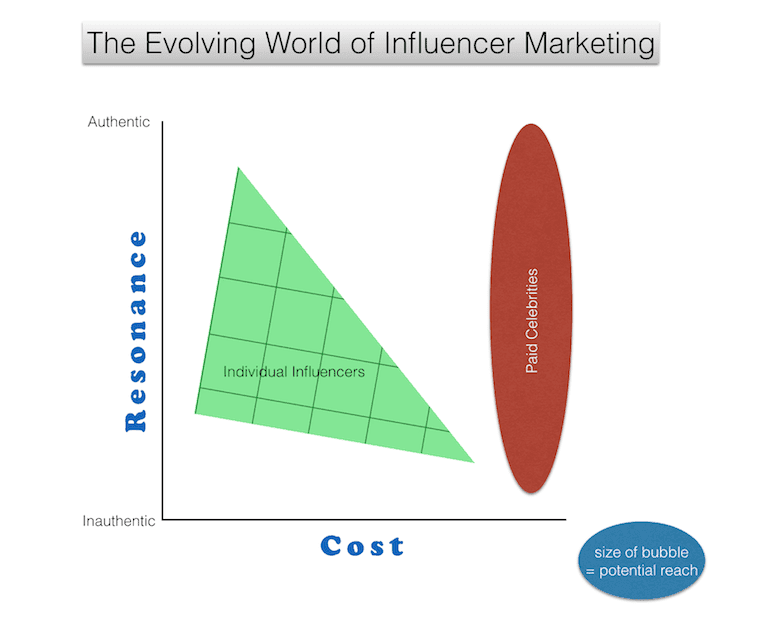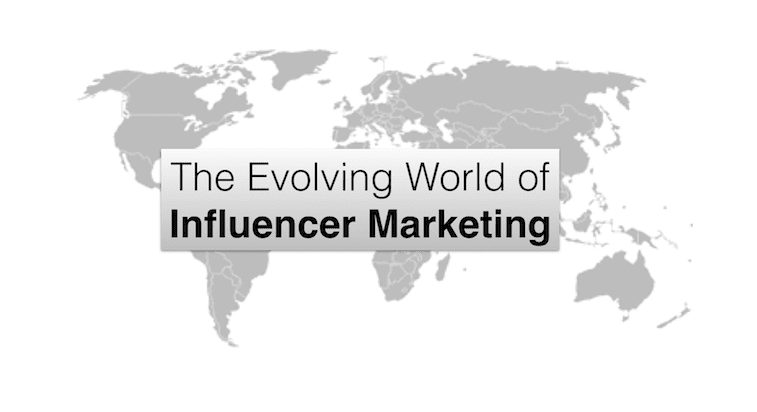Influencer marketing is probably one of the hottest areas this year in terms of marketing. I hesitate to say it’s a “buzzword,” but for most companies, the concept remains at best a new line in the marketing P&L. Reality is that influencer marketing is a new field and even the influencers are having to find their way.
Influencer marketing -- at its core -- is the new and improved version of celebrity endorsement. Share on X The revelation is that now ordinary people can have a voice and a decent audience. Whereas word of mouth — which remains the most powerful marketing tool in existence, bar none — continues IRL among friends at parties, the kicker is the little “publish” or “tweet” button at the end of a recommendation.
The uncomfortable truth of influencer marketing
The uncomfortable truth about engaging with influencers is that it is a whole lot more work than just paying for one celebrity. As a result, marketers are rushing to find ways to industrialise their influencer marketing efforts, with the inevitable downsides and abuses. If celebrity marketing has lost some of its sheen (which I’ve long been suggesting), it is because of the inherent lack of trust that ordinary punters have in the celebrity’s true sentiment and conviction. The beauty of a volunteer (i.e. unpaid) brand fanboy or vlogger is that he/she is speaking without a corrupted voice. That lack of control is irksome to many old school brand marketers (particularly in the luxury space). Moreover, the need to handhold each influencer is time-consuming. As a result, executives feel very hesitant with a sufficient [and immediate] ROI.
The economics
If I had to portray the basic economic graph of the world of influencer marketing, it would look something like the chart below. The area of the bubble/triangle represents the size of the reach. The x axis is all about the checkbook. The y axis is the resonance of the individual with consumers, as expressed via authenticity. Not that all paid celebrities are inauthentic, nor are all unpaid bloggers ethical. However, the gist of the conundrum is that most influencers have a smaller reach (than ‘mass market’ celebrities). That said, the big influencers are beginning to have reach that is comparable to celebrities (if not bigger).

The bottom line is that, in order to get the same type of reach as the big celebrities, typically one has to approach scores of influencers. As the numbers increase, so does the risk of integrity (as far as the genuine and authentic nature of the influencers). Yet, marketers need to find ways to “automate” and “industrialise” their activities, or else they will never have time for rest. Such is the dilemma in influencer marketing.
Aligning influencer marketing activities with your objectives
The key, in my opinion, is to understand what the brand is wishing to achieve with its outreach program. The more congruent the brand is to begin with, the more likely the authenticity will remain intact. The key is to have employees that live and breathe the brand and who are, in fact, the number #1 fans of the brand and, in some cases, influencers themselves.
Bottom line: the more you wish to industrialize your approach, the bigger the risk that the message will start to become weaker and more plastic.
By the way, I recently co-wrote and published a white paper entitled, The 9 Key Challenges of Influencer Marketing for Luxury Brands. Please do check it out! You can find and download it free here.












Trackbacks/Pingbacks